| 1 | Australia’s bitiest snake |
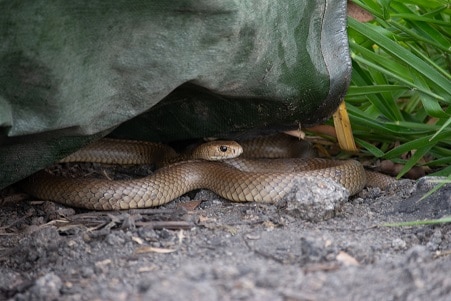
Not all Australian snakes are deadly, despite the country’s reputation as the land “where everything kills you”. But the eastern brown fits the mould perfectly. This is the kind of snake that inspired the country’s slithery reputation, from the present to the early horror stories of European colonists returning to London.
Despite the inland taipan having the most toxic venom, the eastern brown snake holds the unwelcome record of highest yearly bites. From 2005 to 2015, the red-bellied black snake was responsible for 16% of Australian snake bites. The tiger snake caused 17%, while the brown snake group dominated at 43%.
For deaths, brown snakes were even more disproportionate, at 15 of 19. Another set of statistics has the brown snake family causing 76% of Australian snake bites, among 3000 snakebites per year.
The eastern brown snake ranks second for venom toxicity among land-dwelling snakes, beaten by the inland taipan. It’s common in eastern Australia, lurking among some of Australia’s most inhabited spots, including Sydney and Brisbane. It’s said that every town from Adelaide to Cairns is secretly surrounded by this snake. Eastern brown snakes meet people constantly, from playparks, to cattle fields, and even people’s front doors.
| 2 | Deadly venom, but low quantities |
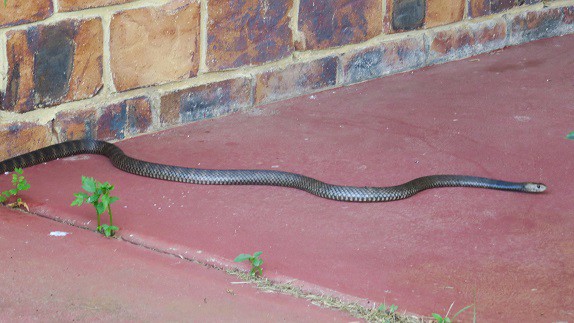
The LD50 rating of eastern brown snake venom is 0.05mg, the quantity required to kill 50% of mice injected into. The inland taipan scores 0.025mg, but the eastern brown successfully out-toxifies the nearby death adder (0.6mg) red-bellied black snake (2.45mg), and tiger snake (0.12mg).
Its venom yield is the opposite, at a very low 4-10mg per bite. The common death adder can produce 200mg per bite, lurking on Australian footpaths waiting for dog walkers. Eastern browns also have relatively small fangs at 3mm, versus 6.2mg for a death adder.
It’s a two-sided coin; the lethal dose in humans is 3mg, but if the venom yield were higher, then they’d truly be unstoppable. The total varies by region, as Queensland eastern browns produce 3 times as much venom as South Australia colonies. There’s also a chance of a fluke venom flood, as the record yield for eastern brown snakes was 67mg. One study examined the seasons, and found that eastern brown venom yield was highest in summer, and lowest in winter.
| 3 | Venom pathways |
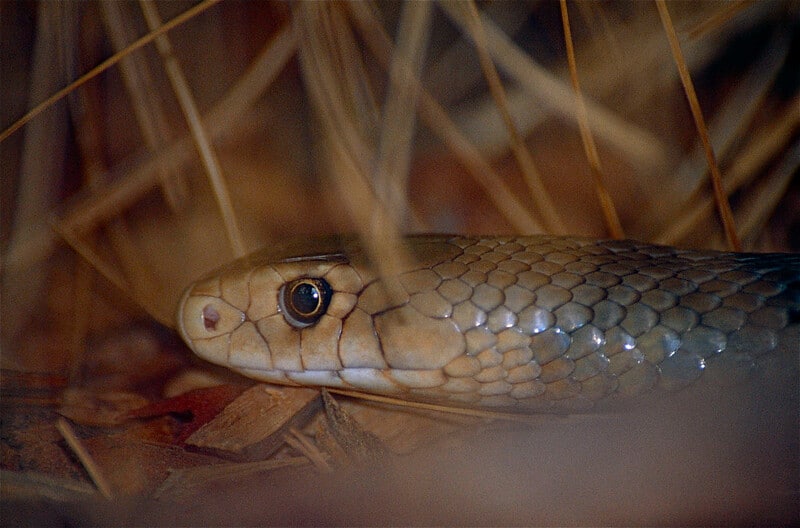
An unusual feature of eastern brown snake bites is the lack of local symptoms. There’s little swelling, blistering, or necrosis to speak of, no skin turning black down the entire forearm.
Instead, the problems are completely concentrated on the inside. Some unlucky bite victims have dropped dead in two minutes. Eastern brown snakes are most notorious for hypotension and nausea and collapsing, but particularly severe haemorrhaging, via two toxins called VF5a and VF10, which destroy prothrombin.
The first spontaneous bleeding can appear in 30 minutes, and headache within 15 minutes. Headache is a common introductory symptom; two more are nausea and vomiting. The main cause of death is kidney failure, although this rarely happens, thanks to species-specific antivenin produced on a mass scale. 5% of victims suffer cardiac arrest as well.
The only local mark is the one you fear the most: two small fang marks 1.1cm apart, the eastern brown signature. Even then, an eastern brown snake bite can be difficult to spot. This venom is a toxic cocktail of all sorts of ingredients, and probably not ones you’d add to a birthday cake.
| 4 | Families hiding near houses |
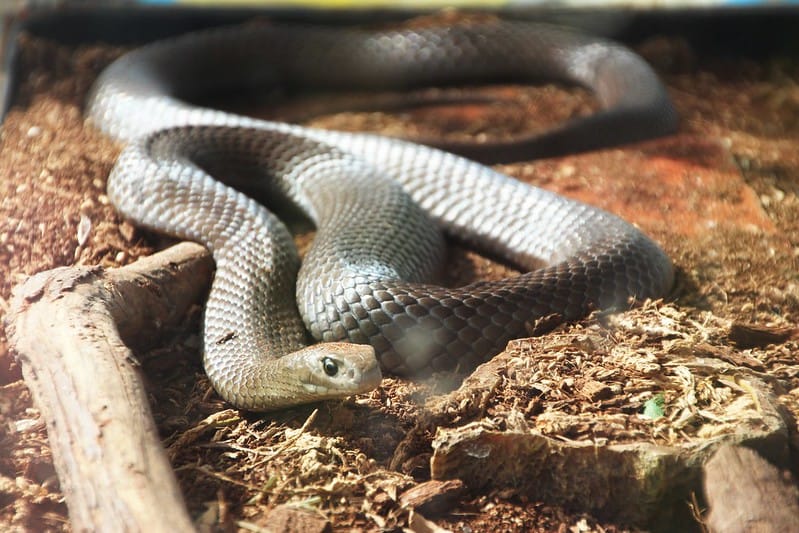
The main neurotoxin in eastern brown snake venom is called textilotoxin, which is unique to the species. Textilotoxin is considered to be the largest and most structurally complex neurotoxin of any snake.
Despite this, neurotoxic effects have rarely been observed in humans, which has been dubbed the “brown snake paradox”. Either levels within the venom are too low (3% by weight) or textilotoxin struggles to bind to receptors in humans. The only occasional neurotoxic symptoms are drooping eyelids and double vision. In cats and dogs meanwhile, severe effects like paralysis are common.
An unusual feature of eastern brown snakes is sharing winter dens together. Snakes are solitary creatures, but scientists have lifted up concrete slabs of houses and found groups of 6, 13, or even 17 huddled up together. Some were even wrapped around each other, in a tight warmth-preserving formation. This has both a good side and a bad: 1) it’s kind of heartwarming, but 2) they might decide to kill you.
| 5 | Recognisable defensive display |
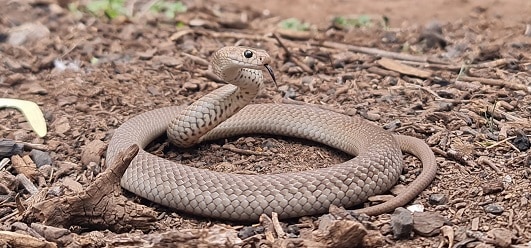
Part of the problem is the eastern brown snake’s temperament. They don’t lie motionless by footpaths, only biting when unluckily stepped on, but are volatile and aggressive. Eastern brown snakes have a very obvious warning display. They raise themselves off the ground extremely quickly, but instead of going straight upwards at 90 degrees like a cobra, they poke their upper body forwards and move it from side to side, with an expression of sheer viciousness on their face. The upper body is normally coiled in an s-shape, for optimal springing.
It’s movement that triggers them; one can stand feet away still as a statue, and cause the snake to relax and begin leaving (see this video). Try to edge away, and the viciousness and posturing will return in a flash, head swivelling back around with fangs bared.
Eastern brown snakes sometimes camp outside people’s front doors and make children walk right past them. The more an eastern brown snake opens its mouth, the more it is seriously preparing to strike rather than bluffing.
| 6 | Dark clothing for safety |
Despite all this, the eastern brown snake isn’t a great white shark; they’re not an ultra-optimised attacking machine designed by nature solely to kill. They’re fast at slithering along dirt tracks (although they’re poor on shiny kitchen tiles), but only average when lunging to bite. Scientists found an average strike speed of 3.37m/s, no faster than vipers or colubrids.
They’re also fairly inaccurate when striking, as 62% of lunges resulted in a miss. Of the 18 successes, 3 weren’t successfully bitten, just a collision. Of the remaining 15, 7 were “firm” bites where the venom was injected deeply and left noticeable pools on the skin’s surface. The remaining 8 were glancing blows which only injected fragments.
There’s a few secrets to learn, as a study on 445 encounters found that eastern brown snakes are much less likely to strike people wearing dark clothing. Why? Because they notice them faster, and have a chance to escape, which is their default. They notice people less on cloudy days compared to sunny, and in September and October, the males are preoccupied with mating. The key is to avoid startling them, to raise the alarm early – this is the same theory behind yelling “hey bear” in US national parks.
| 7 | Deforestation has helped them |
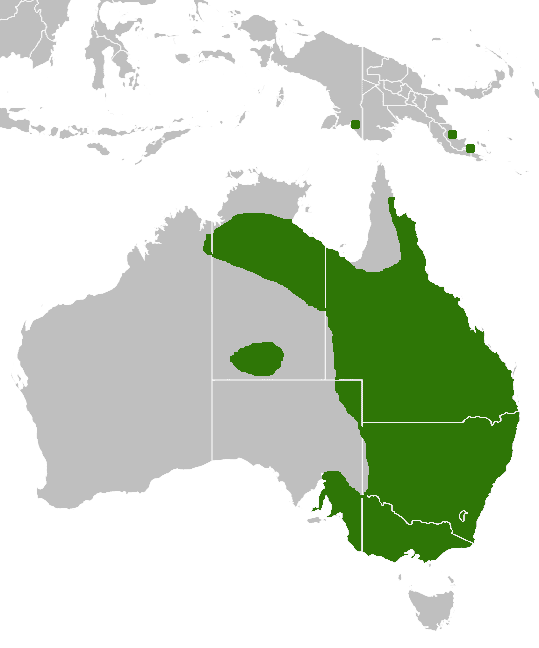
For those terrified of the eastern brown snakes orbiting Australian towns, there’s a grim truth to face – we only have ourselves to blame! As deforestation advances, there are winners and losers in nature. The koala is the poster child of endangerment, but the eastern brown snake has won big time. The species much prefers open areas such as fields, light forests, and sparsely vegetated scrubland.
As other species fall away, it leaves more food for eastern browns to thrive on. Rather than retreating, they may have multiplied since Europeans first colonised the east coast. Eastern brown snakes can appear on kitchen floors, garages, and by front doors; this infamous video shows a smiling old man kick a hissing eastern brown snake in the face, before doddering off happily like nothing happened, in a civilised area with picnic benches.
Outside of Australia, eastern brown snakes have three small colonies in New Guinea, which are natural rather than manmade. The snakes almost certainly migrated northwards via ice age land bridges in the Pleistocene, forming from modern-day Arnhem Land and northern Queensland.
| 8 | Smooth with few patterns |
The eastern brown snake is medium sized, averaging at 1.5 metres. In 2015, a two metre brute was caught in a New South Wales garden, and dubbed Gigantor by a wave of publicity. He had twice the girth as normal, and produced 30mg of venom in a single milking. However, the all time record was 2.4 metres, as revealed in 2001.
Eastern brown snakes have small heads little thicker than the body. They have few noticeable patterns, but the body colour varies from pale to dark brown. Those in Queensland tend to be bigger, as well as producing more venom and textilotoxin within that venom. Their irises are orange outlined by black with round pupils, and their scales are smooth to touch (don’t though…). Males are larger than females with eastern brown snakes. This is a thin-bodied snake with a thick eyebrow ridge.
Pseudonaja textilis is easy to confuse with other brown snakes, particularly a distance, but the first image of this study has a fantastic map, showing the range of 9 different Pseudonaja members. The eastern brown snake is the only to inhabit Sydney, Melbourne, Brisbane and other east coast cities. In Queensland, it overlaps with the northern and western brown snakes, but generally you’re safe. When in doubt, just run.
| 9 | Animals they hunt (and are hunted by) |
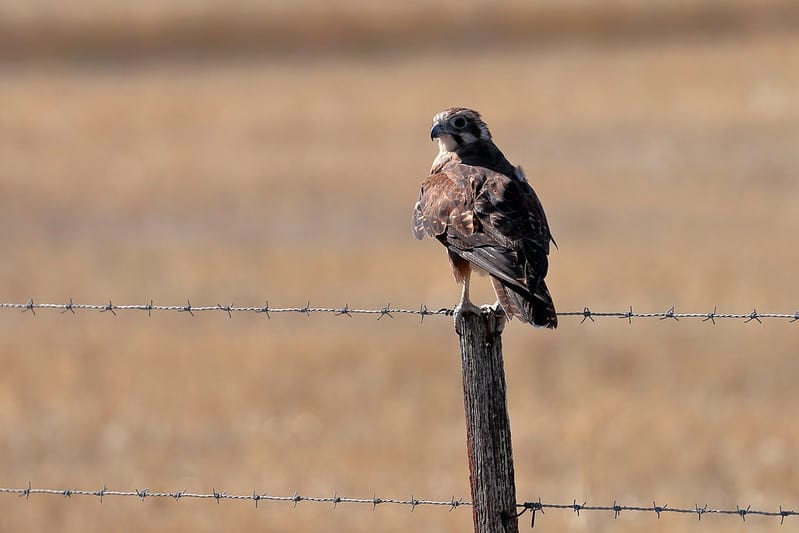
Aside from human beings, the eastern brown snake’s diet is split between small reptiles and mammals. In proper wilderness they eat plenty of skinks, but all this falls by the wayside when the house mouse appears. In adults, this is by far their favourite species; house mice were introduced with European colonisers, and are another reason why eastern brown snakes are so common now, particularly near houses. The older they get, the higher percentage of mammals they consume.
Eastern brown snakes aren’t safe themselves. They’re preyed on by many bird species, including Australian white ibis, wedge-tailed eagles and silver gulls. In New South Wales, two bird predators were confirmed at once; a black falcon snatching a metre-long eastern brown from the clutches of a mid-flight little eagle (Hieraaetus morphnoides).
In 2018, meanwhile, a NSW farmer photographed a brown falcon picking up an 80cm eastern brown snake, breathing a sigh of relief that there was one less near his house. The brown falcon has the most sightings; an older study cut one open (already dead) to find two eastern brown snakes inside, measuring 25cm and 30cm. Brown falcons hunt eastern brown snakes more commonly than black falcons, which rely less on reptiles.
| 10 | The antivenin fightback |
Eastern brown snakes are an active hunter, which relies particularly on eyesight. While prowling fields, they common raise their heads and scan the horizon like a periscope. Their immense venom works well on mice, but they can also constrict prey, particularly lizards, whose skin is sometimes too thick to pierce with their small fangs.
Bites may be common, but a tireless antivenin industry has sprung up in response. In the Australian Reptile Park (near Sydney) where 2 metre brute Gigantor went to live, the antivenin program milks 200 eastern brown snakes per week. This dates back 50 years, Australia’s oldest eastern brown antivenin service. The park has different systems, as for mulga snakes, they position the fangs on a latex membrane, stretched over a glass beaker, which drips through like a sieve. With eastern browns, they position a pipette below each fangs and let the venom drip in.
Eastern brown snakes are a moderate egg layer, ranging from 10-25, but most commonly 15. Mothers sometimes coil around the eggs after laying them – maybe protectively. Within 15 minutes of hatching, eastern brown snakes already deploy the vicious intimidation display they’re infamous for.